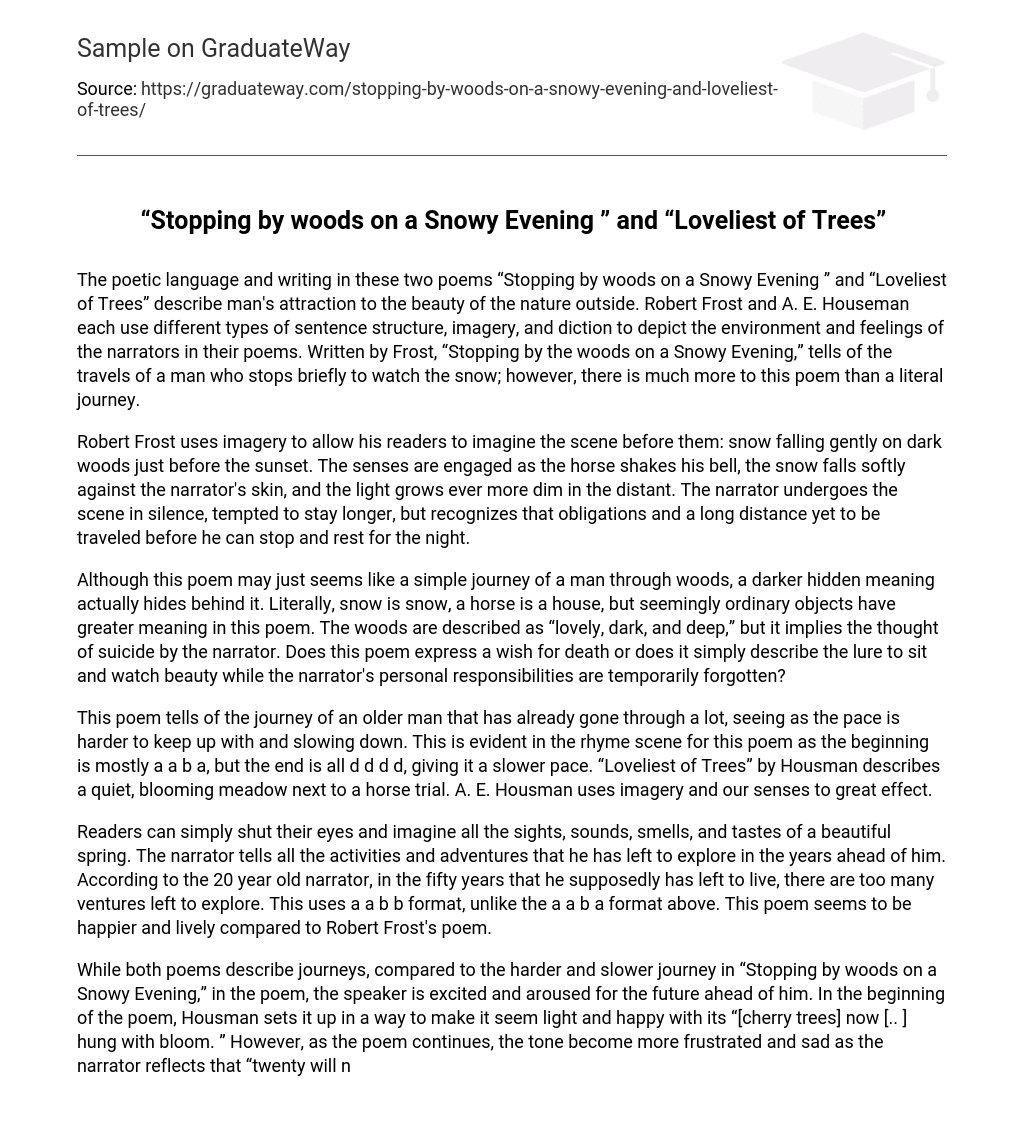The poetic language and writing in these two poems “Stopping by woods on a Snowy Evening ” and “Loveliest of Trees” describe man’s attraction to the beauty of the nature outside. Robert Frost and A. E. Houseman each use different types of sentence structure, imagery, and diction to depict the environment and feelings of the narrators in their poems. Written by Frost, “Stopping by the woods on a Snowy Evening,” tells of the travels of a man who stops briefly to watch the snow; however, there is much more to this poem than a literal journey.
Robert Frost uses imagery to allow his readers to imagine the scene before them: snow falling gently on dark woods just before the sunset. The senses are engaged as the horse shakes his bell, the snow falls softly against the narrator’s skin, and the light grows ever more dim in the distant. The narrator undergoes the scene in silence, tempted to stay longer, but recognizes that obligations and a long distance yet to be traveled before he can stop and rest for the night.
Although this poem may just seems like a simple journey of a man through woods, a darker hidden meaning actually hides behind it. Literally, snow is snow, a horse is a house, but seemingly ordinary objects have greater meaning in this poem. The woods are described as “lovely, dark, and deep,” but it implies the thought of suicide by the narrator. Does this poem express a wish for death or does it simply describe the lure to sit and watch beauty while the narrator’s personal responsibilities are temporarily forgotten?
Readers can simply shut their eyes and imagine all the sights, sounds, smells, and tastes of a beautiful spring. The narrator tells all the activities and adventures that he has left to explore in the years ahead of him. According to the 20 year old narrator, in the fifty years that he supposedly has left to live, there are too many ventures left to explore.
While both poems describe journeys, compared to the harder and slower journey in “Stopping by woods on a Snowy Evening,” in the poem, the speaker is excited and aroused for the future ahead of him. In the beginning of the poem, Housman sets it up in a way to make it seem light and happy with its “[cherry trees] now hung with bloom. ” However, as the poem continues, the tone become more frustrated and sad as the narrator reflects that “twenty will not come again,” “[leaving him] only fifty more. ” Also, the change from blossom to snow, emphasizes the the change between life and birth to death.





